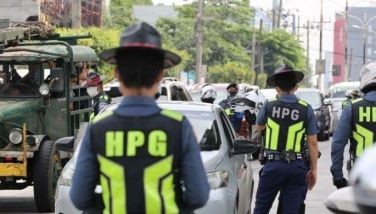Phivolcs says Phl needs better earthquake preparedness
MANILA, Philippines - The Philippine Institute of Volcanology and Seismology (PHIVOLCS) on Wednesday underscored the need to strictly impose the regulations on buildings and structures to minimize the impact of earthquakes.
PHIVOLCS chief Renato Solidum Jr. noted that weak structures are vulnerable to earthquake-related hazards such as ground shaking and liquefaction.
“We need to have appropriate land use. We have to be serious towards construction of buildings. We have to implement the Building Code strictly,†Solidum said in a lecture organized by the New Zealand Embassy in Makati.
Citing a previous study, Solidum said about 168,300 of residential buildings may be heavily damaged and about 339,800 others may be partly damaged if a magnitude 7.2 quake caused by the West Valley Fault hits the country.
The West Valley Fault, also known as the Marikina fault line, starts from the Sierra Madre and runs through Bulacan, Rodriguez, Rizal, Quezon City, the eastern side of Metro Manila including Pasig, Taguig, Muntinlupa, San Pedro, and Sta. Rosa in Laguna and ends in Carmona, Cavite.
Government scientists previously claimed that the fault can cause a magnitude 7.2 quake and “is ripe for another major movement.â€
Solidum said under the same scenario, about eight to ten percent of public buildings may sustain heavy damage while about 20 to 25 percent may be partly damaged.
A magnitude 7.2 quake, Solidum said, can also leave 33,500 persons dead and 113,600 others injured. The temblor can also affect lifelines like water pipes, electricity, bridges and communication facilities.
“We don’t want this scenario to happen we have to do something so it won’t happen,†Solidum said.
Rob Johnston General Manager for Business Development of New Zealand’s Geological and Nuclear Sciences said the Philippines should consider developing a plan to retrofit buildings that fail to meet standards.
New Zealand has also experienced strong quakes, including the 2011 Christchurch earthquake that left close to 200 persons dead and damaged about 100,000 buildings.
Johnston said the government should also identify resources that need to be functioning after an earthquake like hospitals, disaster management centers, roads, broadcast media, fire and ambulance stations, and telecommunication facilities
Johnston also cited the importance of reviewing the engineering designs of buildings and roads to determine if they are resilient to disasters.
“Do it now. Once the earthwuake strikes, it is too late,†Johnston’s presentation read.
Solidum enumerated six major strategies to reduce the impact of earthquakes in Greater Metro Manila area. These are:
- Enhance the legal framework and institutional capacity for effective disaster management system.
- Build capacity for relief and recovery.
- Strengthen community preparedness for disaster. He said communities not be too dependent on government
- Strengthen building and structures including power and water facilities
- Enhance national government resistance to earthquakes.
- Promote research and technology development for earthquake impact reduction measures
“Earthquake preparedness should be everyone’s business,†Solidum said. – Alexis Romero
- Latest
- Trending































